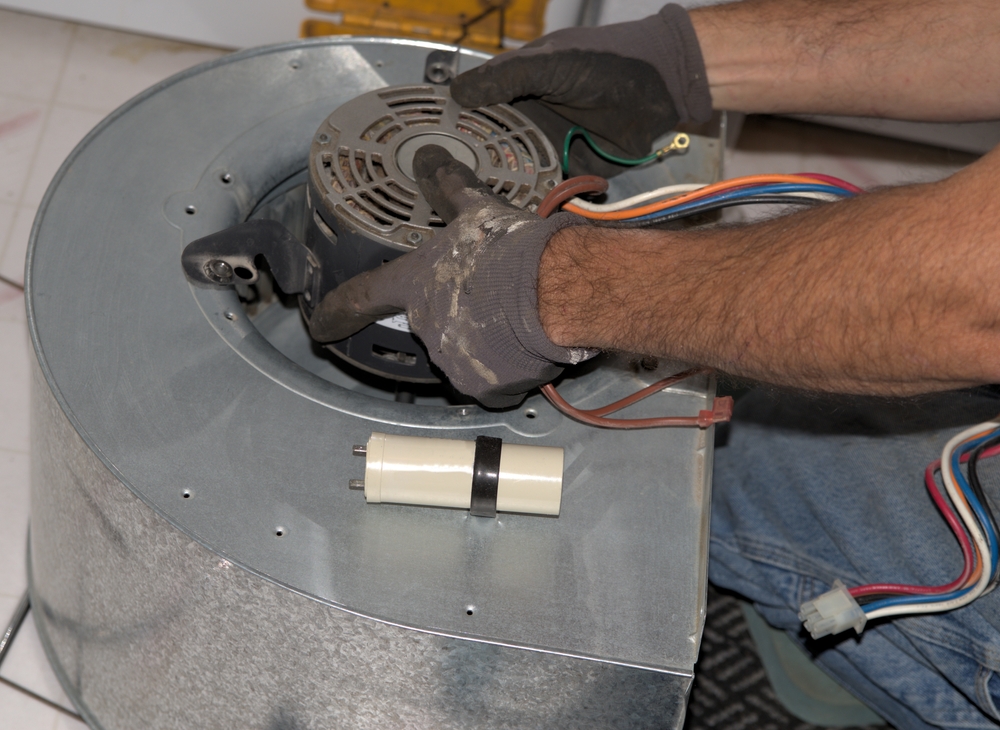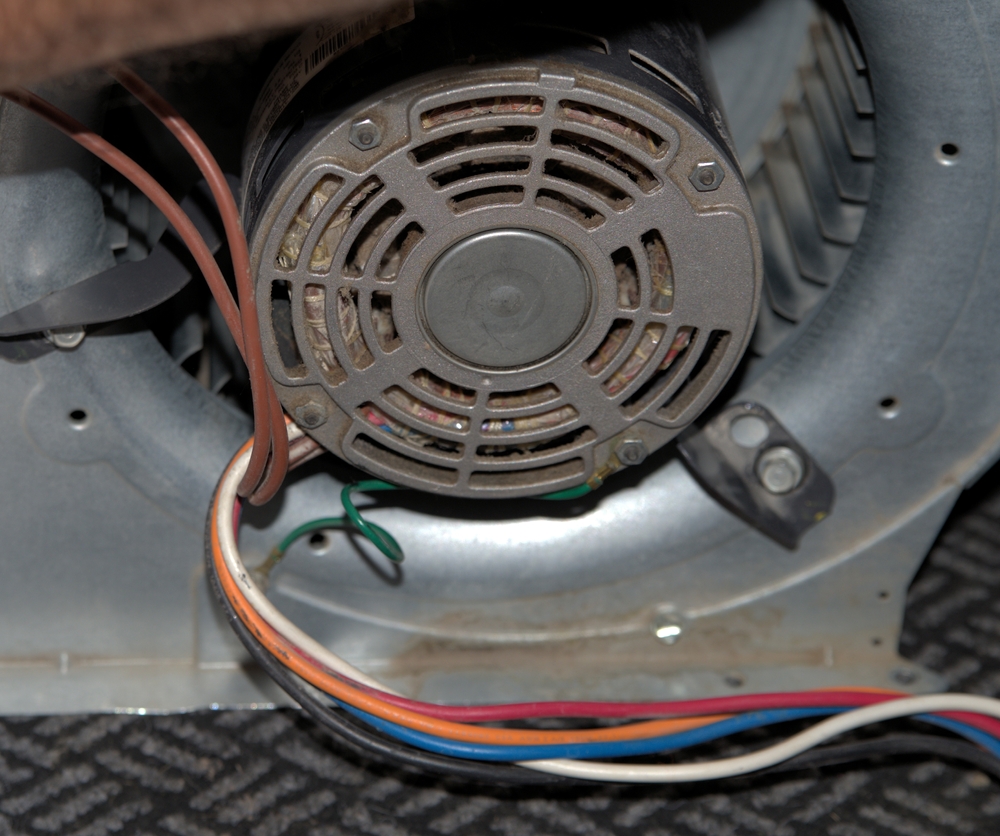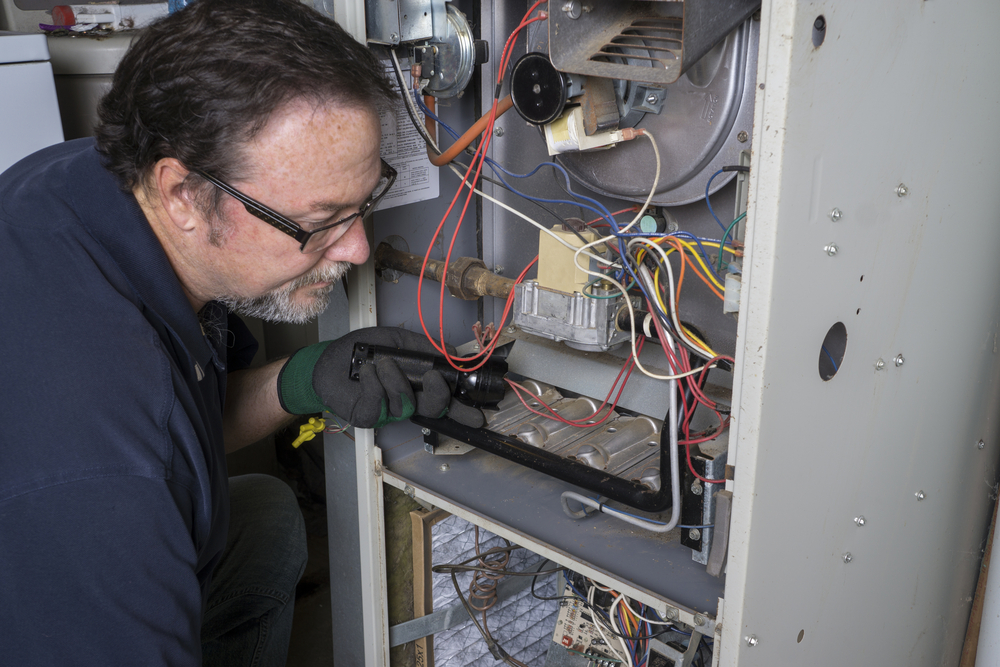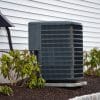If you’re experiencing issues with your home heating, sometimes it could be due to a bad blower motor.
In this article, you’ll learn how to identify the signs of a failing furnace blower motor and what to do next. Get ready for a more comfortable, worry-free home heating experience!
What is a furnace blower motor?
A furnace blower motor is a critical component of a heating system, specifically in forced-air heating systems like furnaces and heat pumps. Its primary function is to circulate warm air throughout a home or building by pushing the heated air through the ductwork and into the living spaces.
Some people get confused between a blower motor and an inducer motor, but they are different.
A blower motor circulates air within a heating and cooling system, distributing warm or cool air throughout a building. On the other hand, an inducer motor is primarily found in gas-powered furnaces and is responsible for creating a draft to expel combustion gases safely from the furnace and vent them outside.
Here’s how a furnace blower motor works:
- Air Circulation: When the thermostat detects the need for heating, it signals the furnace to start heating the air.
- Heating: The furnace heats the air, raising its temperature to the desired level.
- Blower Motor Activation: The furnace blower motor then activates. It is connected to a fan or blower wheel, which creates airflow.
- Distribution: The blower motor forces the now-heated air through the ductwork and out of vents in various rooms. This distributed warm air is what provides heating to the space.
- Circulation Control: The blower motor may have different speed settings to control the airflow rate and distribute heated air evenly throughout the building.
How do you know if your furnace blower motor is bad
Identifying the early signs of a malfunctioning furnace blower motor is crucial for timely intervention and repair. Here are the key indicators:
1. Unusual Noises
Screeching or Squealing
These sounds often indicate a lack of lubrication in the motor or worn bearings, possibly also pointing to misaligned belts or issues with the motor’s pulley system.
Rattling
This can signify that internal components, such as screws or other hardware, have become loose.
Banging or Thumping
These sounds suggest serious issues like unbalanced blower wheels or a motor struggling to turn the fan.
2. Weak Airflow
Insufficient Heating
Rooms may not warm up efficiently, or the furnace takes longer to reach the desired temperature.
Uneven Distribution of Air
Some areas of the home may receive less airflow than others, leading to cold spots.
3. Motor Overheating
Excessive Heat from the Furnace
The area around the furnace becomes unusually warm, indicating potential motor overheating.
Frequent Resets
An overheating motor may cause the furnace’s safety features to trigger, requiring frequent resets.
4. Inconsistent Performance
Start-Stop Issues
The blower motor may struggle to start or stop unexpectedly during operation.
Fluctuating Speeds
The fan speed varies without any input changes, suggesting control issues with the motor.
5. High Energy Bills
An inefficient, struggling blower motor often increases energy usage and higher bills.
6. Age and Wear
An older furnace, especially one that isn’t regularly maintained, becomes more susceptible to blower motor issues due to the natural wear and tear over time.
What should you do when the blower motor fails?
When you suspect that your furnace’s blower motor is failing, it’s important to approach the situation safely. Here’s how you can start:
3 Simple Troubleshooting
Before starting these troubleshooting steps, ensure you have a certain level of understanding of furnace and HVAC systems. Inexperienced attempts can damage your furnace or pose safety risks. When in doubt, consult an HVAC professional. These steps are for initial checks on common furnace blower motor issues, not complex repairs or diagnoses.
Step 1: Check the Basics
Begin by ensuring that your furnace’s power supply is intact and the thermostat settings are correct.
Sometimes, the issue can be as simple as a tripped circuit breaker or a wrongly set thermostat.
Step 2: Clean or Replace the Air Filter
A dirty air filter can restrict airflow, causing the motor to work harder and potentially overheat. Check the filter, and if it’s clogged with dust and debris, clean it or replace it with a new one.
Step 3: Inspect the Blower Motor and Belt
Look for visible signs of wear and tear. Check the belt for cracks or fraying if your furnace has a belt-driven blower motor. Also, ensure that the motor itself is free of dust and debris. Some motors have lubrication ports; if yours does, apply a few drops of oil designed for this purpose.
Call A Professional
Most homeowners can handle basic troubleshooting, but there are situations where calling a professional is the best course of action:
Complex Issues
If the simple steps don’t resolve the problem, or if you’re unsure about any part of the process, it’s time to get professional help. HVAC technicians can diagnose more complex issues that might not be apparent to the untrained eye.
Safety Concerns
Working on a furnace can be dangerous. Do not hesitate to call a professional if you have any concerns about your safety or potential risks.
Expert Maintenance
Regular professional maintenance can prevent many common problems with furnace blower motors. An HVAC technician can perform a more thorough inspection and maintenance, ensuring your system operates efficiently and safely.
FAQs
How long does a blower motor last?
Typically, a well-maintained blower motor can last between 10 to 20 years. Regular maintenance, such as cleaning and lubrication, can significantly extend its lifespan.
Can a dirty filter cause blower motor issues?
Yes, a dirty or clogged air filter can indeed lead to blower motor problems. When the filter is obstructed, it restricts the airflow, causing the motor to work harder and, over time, potentially leading to motor failures. Regularly changing or cleaning the filter is crucial to prevent this issue.
Is it safe to lubricate my blower motor?
It’s essential to consult the manufacturer’s guidelines or your HVAC technician to determine whether lubrication is necessary for your motor and, if so, how to properly perform this maintenance task.
Conclusion
Knowing the signs of a failing furnace blower motor is essential for maintaining a well-functioning heating system. If you see symptoms like unusual noises or reduced heating efficiency, you should call an HVAC expert to check and repair your furnace as soon as possible to prevent further damage.





